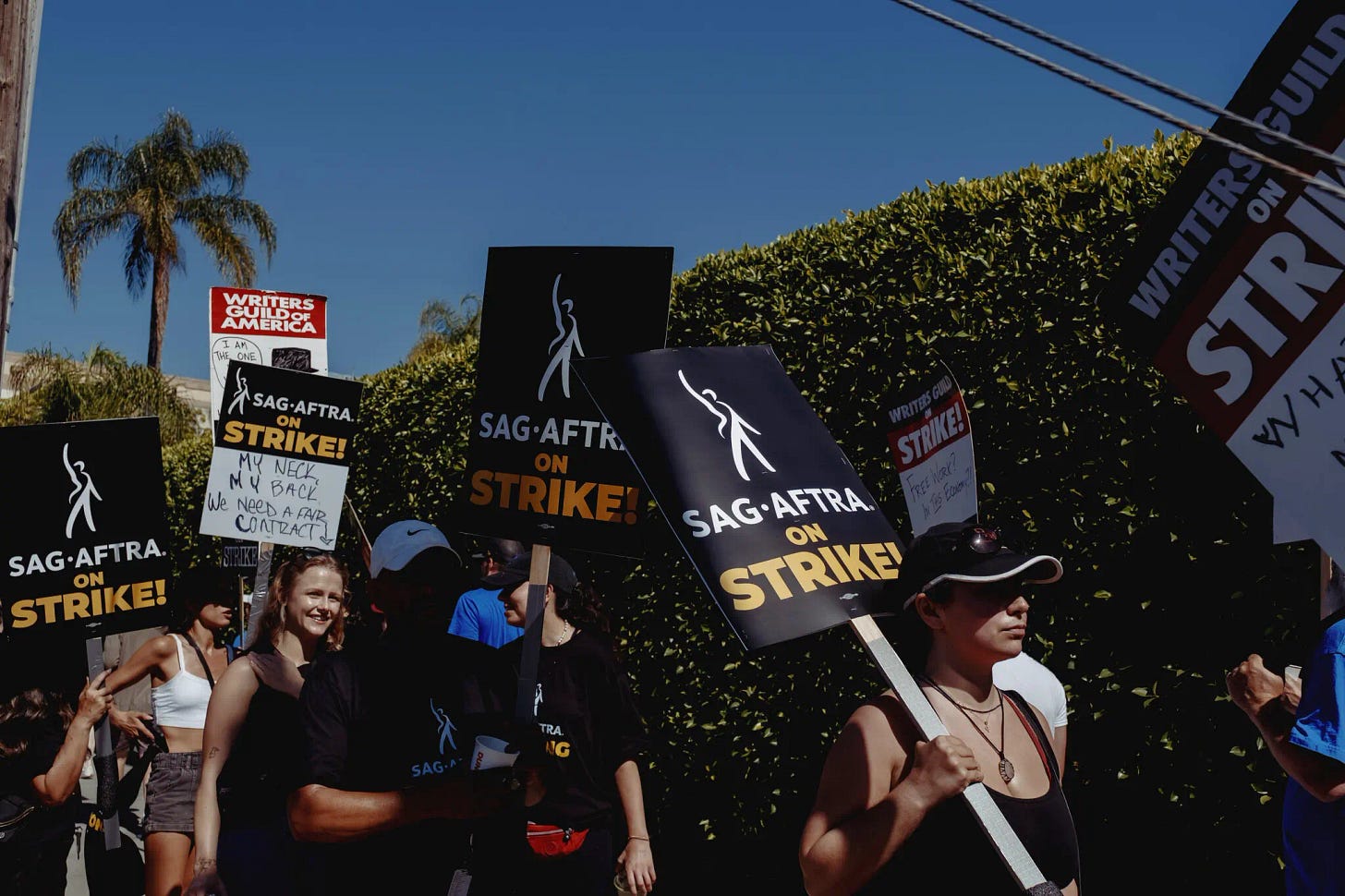What’s “Realistic,” What’s “Disturbing”?
How Entertainment Trade Magazines Spin the WGA, SAG-AFTRA Strikes

Just two days after the Hollywood writers’ strike began on 2 May 2023, Deadline Hollywood tweeted, “Saturday Night Live fans, want to know what you are missing? Kieran Culkin and Jennifer Coolidge were set to host the final two episodes of the season before the writers strike forced an end to season 48 of the venerable NBC show.” In other words, how is this strike affecting consumers? Why are the underpaid, exploited writers deliberately standing in the way of your favorite shows?
The Writers Guild of America (WGA) and the Alliance of Motion Picture and Television Producers (AMPTP), which represents major Hollywood studios such as Netflix, Amazon, Disney, and others, had reached an impasse after six weeks of negotiations, resulting in the WGA voting unanimously to authorize a strike. Streaming services have changed how writers are paid, including paltry residuals and weekly wages, and have created a “gig economy,” wherein writers have no choice but to jump from job to job to stay afloat. Network TV, where seasons run for at least twenty episodes, allows steady full-time work for months; streaming shows typically mean less work, less pay, and shrinking writers’ rooms.
In July, the American actors’ union SAG-AFTRA joined the writers on the picket lines after failed negotiations with the AMPTP, which similarly included disputes over pay, regulation of AI, and better healthcare.
Trade publications zeroed in on workers immediately, minimizing their demands and rarely focusing on the major studios’ inaction. After Snoop Dogg canceled two Hollywood Bowl shows in solidarity with WGA and SAG-AFTRA, Rolling Stone tweeted that the strikes were “completely unrelated to what he does as a musician.” Rolling Stone later deleted the post. A May Variety headline villainized a writer for a tongue-in-cheek picket sign, referencing Jenna Ortega’s comments about having “chang[ed] lines” on her show Wednesday. Deadline published an article in July, quoting an executive who said, “The endgame is to allow things to drag on until union members start losing their apartments and losing their houses.”
A pattern in trade publications’ coverage of the strike soon emerged: Writers against viewers; writers against actors; and finally, writers against each other, where forging ahead might mean losing everything. The Writers Guild of America (WGA) immediately called out the “union-busting” Deadline article as “studio propaganda.” Comedian, actor, and writer Jenny Yang told Yahoo! News, “As a former labor organizer, this article reeks of a desperate attempt by these corporate insiders to break our morale and scare us.”
Entertainment magazines, such as Deadline Hollywood, Hollywood Reporter, Variety, and Rolling Stone, have a clear stake in the strike. All are owned by Penske Media, which rakes in millions yearly in award-show advertising. Although initially slated for September 2023, the Primetime Emmy Awards have already been postponed until January 2024. And Emmy consultants believe campaign advertising might only add fuel to the fire.
“I think a noisy campaign could do more harm than good,” one consultant told the Los Angeles Times back in May, “I don’t think it’s a good look to be seen spending millions of dollars on an Emmy campaign right now.”
Studios failing to meet the unions’ demands results in far less content for publications like Deadline and Variety. Writers and actors are prohibited from engaging in any publicity services, including providing personal interviews and attending for-your-consideration events, panels, or premieres. For entertainment media, a resolution is crucial, but not for the same reasons it is for the unions.
Writers and actors expect to earn a living wage, especially for projects that make a killing for multibillion-dollar studios. Disney CEO Bob Iger recently told CNBC that the writers’ and actors’ expectations are just not “realistic” and that he finds the strikes “disturbing,” but that’s coming from someone who makes “535 times a Disney employee’s median pay.” It doesn’t get more disturbing than that.




